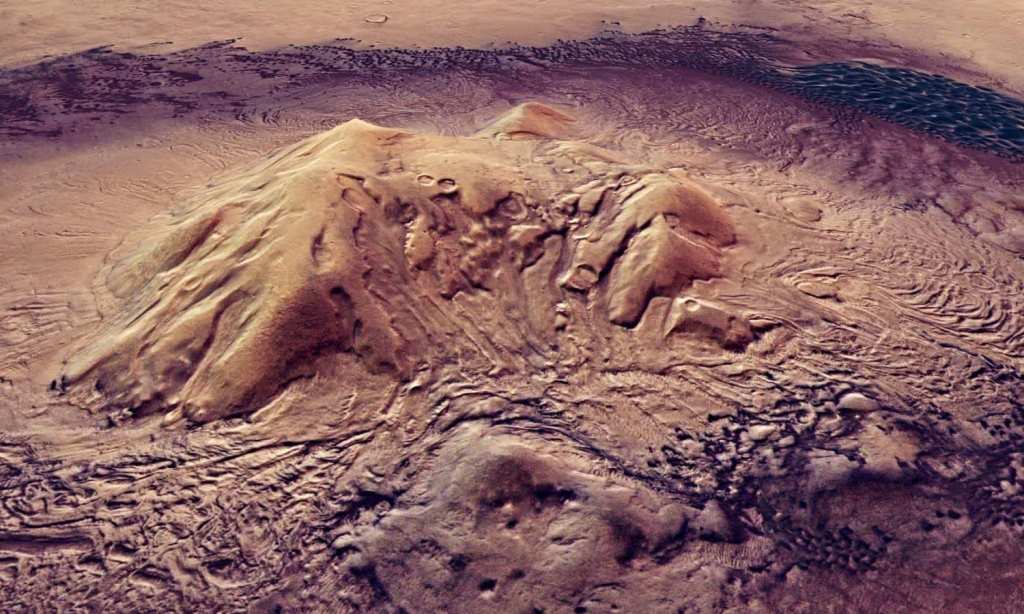NASA’s Perseverance rover managed to create oxygen on Mars just a few days ago, and now, it begins its search for ancient life on the surface of Mars.
A new study suggests that the Martian subsurface might be a good place to look for present-day life, and it’s possible scientists have found what they’ve been looking for.
The study, published in the Astrobiology journal, looked into breaking down the chemical composition of Martian meteorites – rocks blasted off the surface of Mars, that eventually land on Earth. What they found was that these rocks, if in constant contact with water, will produce the chemical energy needed to support microbial communities that are similar to ones that survive in unlit areas on Earth.
Because these meteorites represent the actual subsurface of Mars, these findings suggest that a lot of the Mars subsurface could actually be habitable.
“The big implication here for subsurface exploration science is that wherever you have groundwater on Mars, there’s a good chance that you have enough chemical energy to support subsurface microbial life,” said Jesse Tarnas, a postdoctoral researcher at NASA’s Jet Propulsion Laboratory, who led the study while completing his Ph.D. at Brown University.
“We don’t know whether life ever got started beneath the surface of Mars, but if it did, we think there would be ample energy there to sustain it right up to today.”
Pretty recent science has shown that the depths of Earth are home to a vast habitat that basically exists separately from the world that us humans inhabit. Lacking sunlight, the creatures of this habitat survive using the byproducts of chemical reactions that are produced when rocks come into contact with water.
These live “creatures” come in the form of bacteria and other single-celled organisms and although they may not look like the creatures we know, the history of life on Earth is actually largely microbial. The period from dinosaurs to where we are now only makes up about 5% of the history of life.
This means that before there were humans, there were microbials. Looking at where we are on Earth now, with a rich history of animal evolution and now the human race, we could be looking at the beginning of a similar evolution on Mars.
One of the chemical reactions that occurs when rocks come into contact with water is radiolysis. The reaction breaks water molecules into their constituent elements; hydrogen and oxygen.
The hydrogen is dissolved in the remaining groundwater, while minerals like pyrite (fool’s gold) soak up free oxygen to form sulfate minerals. Microbes can “eat” the dissolved hydrogen as fuel and use the oxygen preserved in the sulfates to “burn” that fuel
For this new study, the researchers wanted to see if the ingredients for radiolysis-driven habitats could exist on Mars. They utilised NASA’s Curiosity and Perseverance rovers and other orbiting spacecrafts to collect data, including compositional data from actual Martian meteorites.
Basically, they found that all the necessary ingredients to support Earth-like habitats are present on Mars. Especially with something called regolith breccias – meteorites sourced from crustal rocks more than 3.6 billion years old – which were found to have the highest potential for life support.
These findings will help researchers move forward with an exploration program that looks for actual present-day life on Mars. This is a huge step forward, as up until this week, it was reported that there was no present-day life on Mars at all.
Previous research has found evidence of an active groundwater system on Mars, with a recent study raising the possibility of an underground lake lurking under the planet’s southern ice cap. This new research launches these past findings into new territory, suggesting that wherever there’s groundwater, there’s energy for life.
Looks like things are looking up for outer-space lovers. With new research and findings being released every week on the progression of understanding the Red Planet, the relentless nature of Elon Musk and our ever-growing scientific abilities, we’ll be planning family trips to Mars before we know it.
Read more stories from The Latch and subscribe to our email newsletter.







